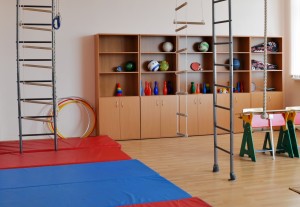How Does Your State Measure Up?
 How does your State measure up in the latest Shape of the Nation Report? This report was compiled by the American Alliance for Health, Physical Education, Recreation and Dance (AAHPERD) along with the American Heart Association. It is a comprehensive look at physical education in our country’s school systems and how this compares with the recommended daily activity for children under 18 and possibly affects the childhood obesity rates. These reports have been released to the public since 1997 with the purpose of advocating improvements in physical education in our school systems, from the local districts up to the federal level.
How does your State measure up in the latest Shape of the Nation Report? This report was compiled by the American Alliance for Health, Physical Education, Recreation and Dance (AAHPERD) along with the American Heart Association. It is a comprehensive look at physical education in our country’s school systems and how this compares with the recommended daily activity for children under 18 and possibly affects the childhood obesity rates. These reports have been released to the public since 1997 with the purpose of advocating improvements in physical education in our school systems, from the local districts up to the federal level.
Background:
– Dramatic reduction in Physical Education during school hours
– Obesity rates in children are at an all time high AND occurring in kids as young as 2 years old!
– Prominent shift in lifestyle in kids from active playtime to sedentary playtime (32% watch 3 or more hours of TV/day and 31% spend 3 or more hours/day at the computer, video games)
– No federal laws mandating physical education in schools in the US
– Each state sets its own physical education guidelines but individual school districts determine if they will follow these guidelines (many go above the minimum)
Findings:
– 78% of studies show a positive relationship between increased physical activity and improved cognitive and academic performance
– 95% of parents surveyed felt increased physical education improved academic performance
– $764 is the average annual budget for physical education in US schools
– $344 billion is the estimated healthcare costs for obesity – related issues by 2018 in the US
Recommendations:
– Kids get a minimum of 60 minutes per DAY of activity including aerobic and strength building
– Elementary kids should get a minimum of 150 minutes of physical education/week, middle and high school kids 225 minutes/week
– Physical education can be taught by licensed and certified teachers
– All states develop minimum standards based on the above recommended National Standards for physical education
– Physical activity is available during pre and post school (on-site) hours, recess, breaks and clubs
– Parents can positively influence their own child’s activity levels by monitoring sedentary times and promoting activity through play and/or sports.



















